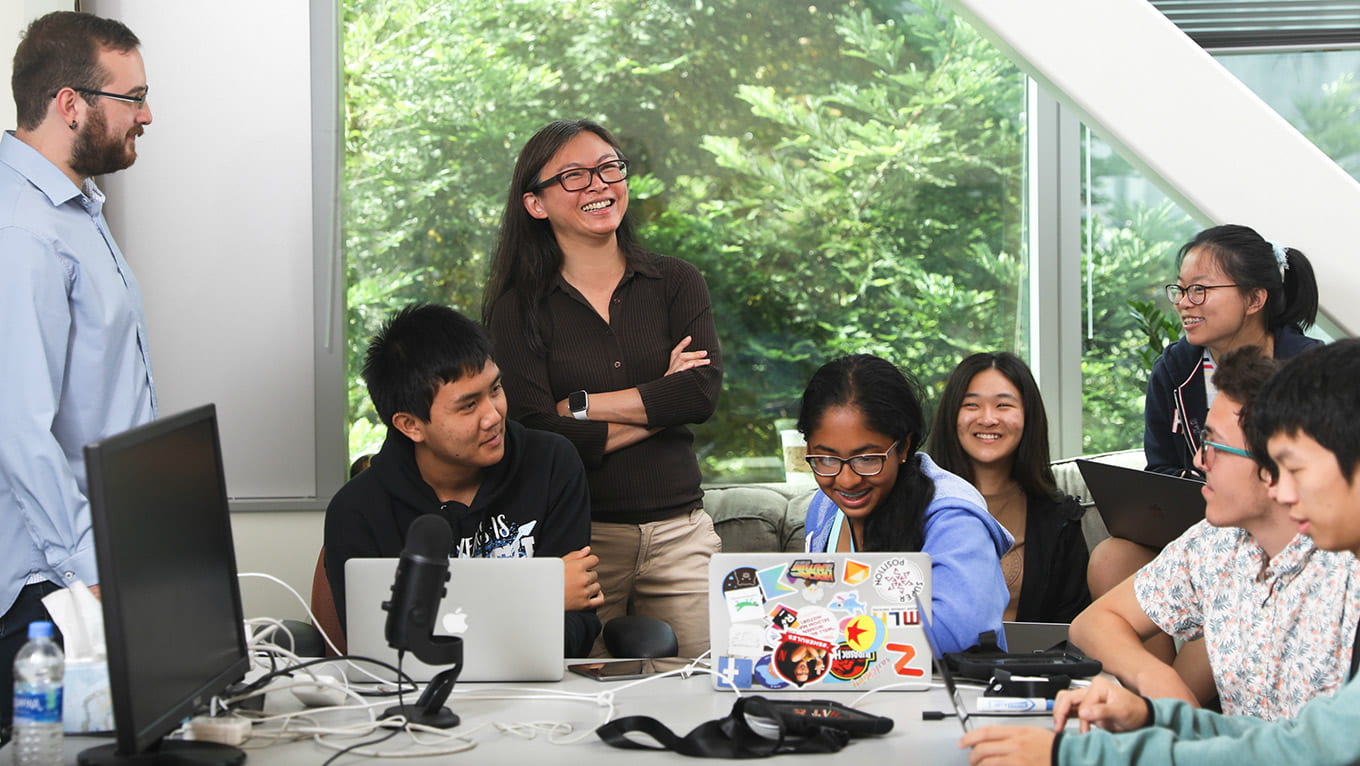Oleksandra Keehl, a computational media Ph.D student working with Assistant Professor Adam Smith, has received one of twenty Women Techmaker Scholars Program scholarships awarded each year. The award will help her develop a mobile game designed to help Japanese language learners master kanji, Japanese logographic script.
The Women Techmaker Scholars Program (formerly known as the Google Anita Borg Memorial Scholarship Program) is designed to create gender equality in the tech industry by encouraging women to excel as active participants and leaders in the field.
Below, Keehl answers some questions about her work and background. For more information about the Women Techmakers Scholars Program, please visit: https://www.womentechmakers.com/scholars.

Tell us about the project you’re working on.
My current research project involves developing a mobile game to help Japanese language learners master kanji (Chinese-origin characters). The project is inherently interdisciplinary, as it involves programming, game design, linguistics and education.
How did you become interested in gaming, and what are your goals or aspirations when you think about pursuing a degree in this field?
I encountered my first video game when I was four. It was love at first sight. While I played many wonderful games, there were always games I wanted to play that didn’t exist. I realized I would have to make them myself. In one such game, “It’s Alive!”, the player is a mad scientist assembling monsters from body parts. It was inspired by two classic puzzle games, Tetris and Plumber. It was featured at a UCSC student game design showcase, where a young teen, a self-proclaimed Tetris and Plumber aficionado, spent 30 minutes straight playing it. He told me “It’s Alive!” was something new and exciting for him – the best praise I could hope for.
Games weren’t my only interest. I grew up speaking three languages (Russian, Ukrainian and English) and experienced books and films in multiple translations in addition to their original tongue. The inconsistencies and cultural undertones each translation inevitably brought fascinated and inspired me to learn more languages. Having set my sights on Japanese, I came across a new challenge: kanji, the logographic part of the language’s four writing systems. Each character has multiple pronunciations and often multiple meanings. Memorizing thousands of them is a tedious task which discourages many would-be learners. If only there was a game that made learning them fun….
Gamification of education is a promising field. While there have been important successes, there is much room to grow. In the Computational Media Ph.D program, I have an opportunity to combine my skills in programming, game design, and linguistics to explore creation of effective and engaging educational games. While my current focus is on a Japanese learning game, the skills I develop in the process will have wider applications for other languages and educational games in general.




